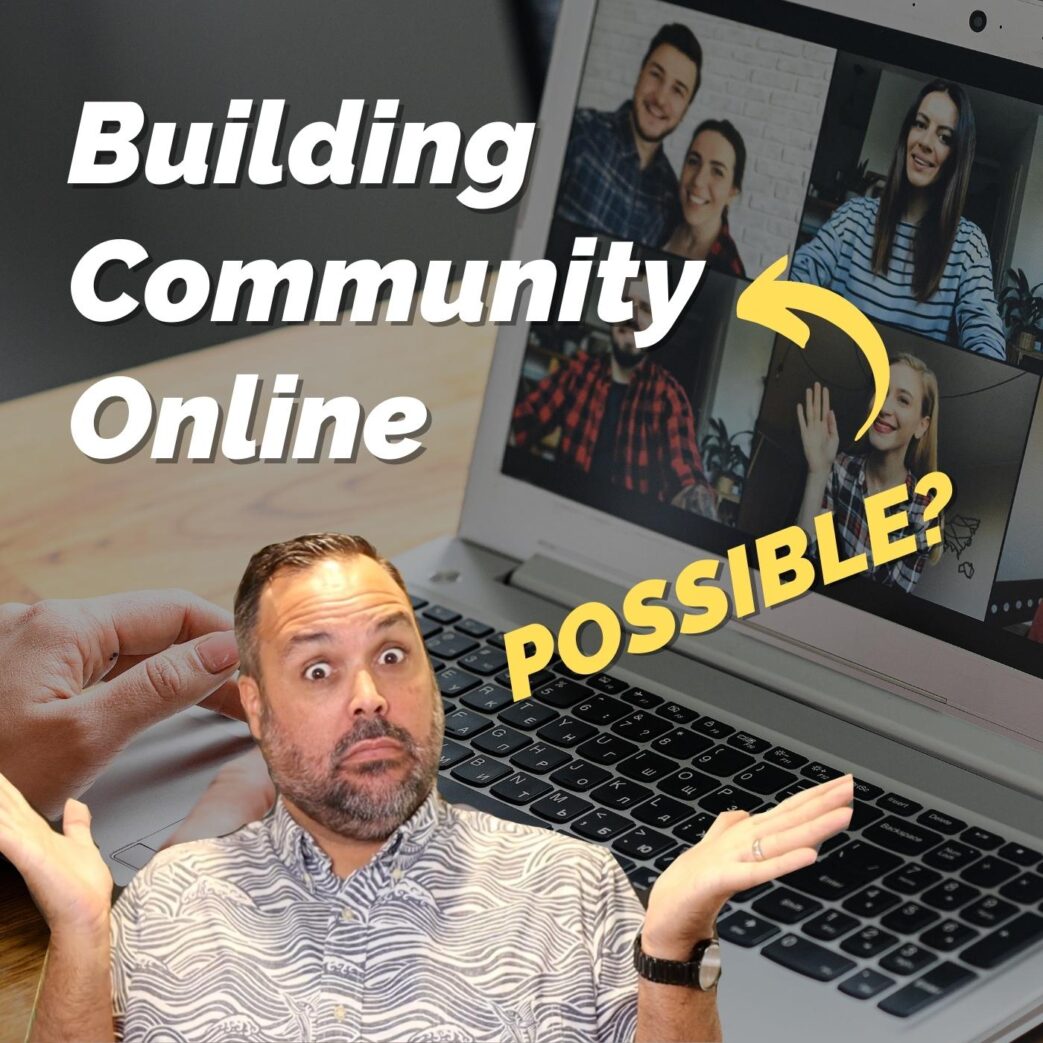The Information Age started in the mid-20th century and has been a paradigm shift for society, but what does this mean for the church? We can fully embrace the opportunities we have to reach people online and stay relevant if we follow some essential digital ministry tips.
This stuff isn’t new but, sadly, many churches are still running ministries and services exactly the same as they were 20 years ago, and trying to tack on some digital elements here and there.
The digital ministry tips we’re talking about in this episode aren’t just technical, they require a mind shift in the way we do church. So, let’s get started!
Table of contents
What is Digital Ministry and Why Does it Matter?
Digital ministry is the use of digital technologies to further the mission of the church. This can include everything from using social media to reach brand new people, to developing online courses or resources for your members, to live streaming weekend worship services.
In short, it’s all the ways you connect, equip, and communicate with people using online platforms.
Now here’s another important question to consider…
What’s the difference between digital marketing and digital ministry?
In these conversations, it’s easy to get confused about digital marketing and ministry because there’s a lot of overlap and we’re using the same tools, platforms, and communication channels. When it comes to digital ministry tips, setting up a church website, Facebook group, and running Google ads is only the beginning.
Marketing is about getting your message out and creating content that will attract and engage people who are not yet part of your church community.
In the past, church digital marketing has been about getting people physically into your building. That’s still a necessary goal, but what about the people who live too far away or are homebound? Or, what about people who come on the weekend but want to connect throughout the week?
People have a phone in their pocket at all times, so how can we connect with them regardless of time or location? Businesses and media have figured this out, and the church must as well!
Digital ministry isn’t just about feeding people content online, it’s about building relationships and discipling people through online technologies. It’s about providing resources and support that will help them grow in their faith journey.
So, with that being said, let’s dive into some practical digital ministry tips that will help you engage.
5 Pillars of Effective Digital Ministry That Builds Community
1. Create a Digital Strategy
The first step in any effective digital ministry is to create a clear digital strategy. You need to clarify your purpose and how you will achieve it. Sharing funny cat memes on social media may get you likes but does it help you achieve your mission?
Your digital strategy should answer the following questions:
- What are your goals for digital ministry? Be clear about what you’re trying to accomplish and how you’ll measure effectiveness and success.
- What are your channels for digital delivery? These are the major digital platforms or channels you will create and maintain such as a website, social media, email newsletter, weekly webinars, or live mid-week worship.
- Why will you produce content? Is the goal of your content to entertain, encourage, teach, connect, or other?
- How often will you produce it?
- Who is responsible for creating and curating content?
In addition, this strategy is not a one-and-done exercise, you need to regularly revisit and update your strategy based on feedback.
2. Define Your Target Audience
Before you can create effective digital content, you need to know who you’re trying to reach. Trying to appeal to everyone will only result in watered-down content that doesn’t resonate with anyone. You can reach different groups at different times, however.
When developing your digital ministry and strategy, think about what needs or pain points your people have. It could be anything from loneliness to parenting to finances. Then, you can create content that addresses those needs and figure out the best online platform for connecting.
Some questions to consider when defining your target audience:
- Who are we trying to reach?
- What do they need or want?
- What problems do they need to solve?
- What kind of content will resonate with them?
3. Develop a Content Calendar
Once you know who you’re trying to reach and the conversation you want to start with them, it’s time to develop a content calendar. This will help you plan and organize your content so that you can be strategic about when and how you release it.
Some content elements to consider:
- What topics will you cover?
- How frequently will you release new content?
- Which platforms will you use to share your content?
- Who is responsible for creating and curating content?
4. Create Compelling Content
When implementing your digital ministry strategy, be sure to create compelling content that is interesting, informative, and shareable. At the same time, being consistent is vital so figure out what’s sustainable for your team to produce long-term.
Creating digital content is time-consuming so you’ll likely need to hire staff, find volunteers, or outsource.
Some things to keep in mind when creating content:
- Make it visually appealing (photos, graphics, videos)
- Keep it short and sweet with an option to read/watch more
- Write headlines that make people want to click
- Make it interactive and engaging
5. Encourage Engagement
Keep the purpose of digital ministry in mind. It’s more than creating cool content, it’s about reaching people, building them up in their faith, and connecting them to your community.
So, how can you encourage engagement with your content?
Think about it from the perspective of the person who is receiving it and incorporate these ideas:
- Use interactive elements like surveys, polls, and hashtags
- Start a conversation and ask questions
- Encourage people to share their stories
- Provide opportunities for people to get involved or use interactive platforms for meetings, courses, and groups
Digital Ministry Tips to Win Online
With these digital ministry tips, you’ll be well on your way to creating a thriving online presence for your church! Just remember to be strategic, purposeful, and consistent in your efforts. Digital ministry is a great way to reach people but it’s not a replacement for in-person connection. Use it as one tool in your outreach arsenal to help connect people to God and the community.
Do you have any other digital ministry tips to share? Comment below and let us know!
More on Digital Ministry for Churches






Comments 1
I hope your vision is real for helping people out there
Thanks